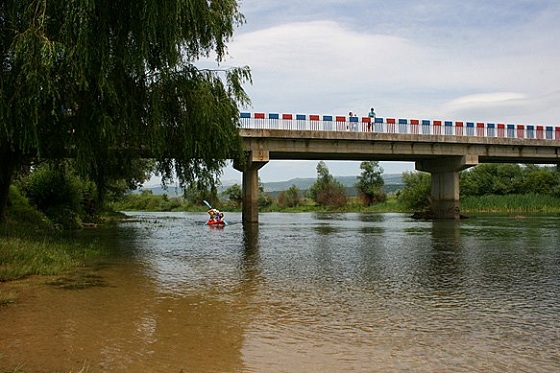The rich diversity of Dalmatian tourism is perhaps best exemplified by the radius of an hour's travel from Split. Looking for islands? Brac and Solta are an hour by boat. Perhaps some coastal action? Choose from gems such as Trogir and Omis. Or for something truly different and very much off the beaten path, head inland and discover the Dalmatian hinterland, one of the most fascinating and undiscovered regions in Europe.
The small town of Trilj is a pleasant 50-minute drive from Split and a world away from the bustle of the city. It is one of Dalmatia's most interesting and lesser known destinations, a place of Roman heritage, adventure sports, impressive fortresses, agro-tourism and great food.

Given its location to the Cetina river, which has played an important role in the town's history, it is perhaps not surprising that the Romans based themselves there to oversee the movements up and down the nearby river. The archaeological site of Tirulij and the Roman legion camp dating back to the 1st centuryand covers a 12 ha. area, part of which is covered by the village of Gardun.

Like everywhere else in the region, Trilj has endured a turbulent history, and attack and occupation were the norm in Dalmatia throughout the ages. One of the benefits for the modern tourist is the string of impressive fortresses dotted around the region, and the eleven fortresses on the Cetina each have their own individual splendour and legends. If you only have time for a couple, Nutjak and Cacvina are both accessible from Trilj

More interesting for the adventure tourist is the rich choice of activity available. Pit your skills against the mighty Cetina with white water rafting, kayaking or a canoe safari, or try some land-based pursuits such as horse-riding, hiking, mountain biking, climbing, trekking or fishing.

The Trilj Region Museum is an important focal point for the archaeological and ethnographic heritage of the immediate vicinity, and it is engaged in the research, purchase, documenting, preservation and presentation of its finds to the public. The museum includes an interesting lapidary arts museum.
Trilj's most famous souvenir is an intriguing one, a walnut necklace. Traditionally, a necklace of walnuts was presented to a girl by her suitor. By accepting and wearing it, the young lady officially accepted the love of the donor.
Trilj's gastronomic delights reflect its location and rich agricultural and eco-ethno potential. That Cetina once again plays a role, with river trout either roasted or fried, often after being covered by corn flour. Other specialities include Koštradina (smoked and dried lamb) and Pulestar (young rooster cooked under a Dutch oven).
For more information, visit the Trilj Tourist Board online.





























